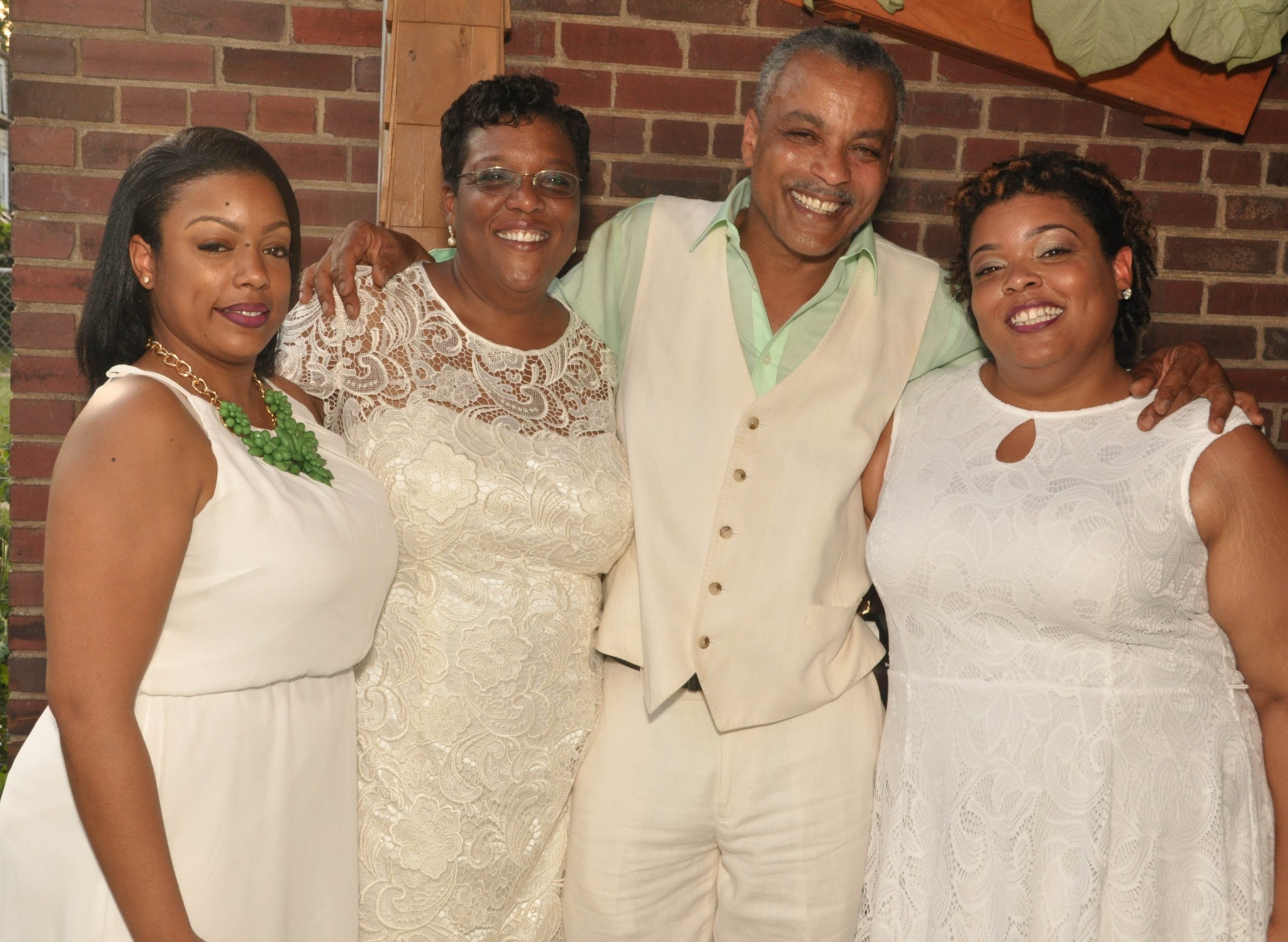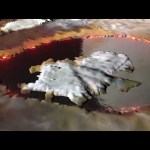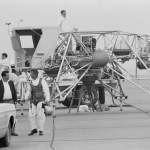
Name: Wanda Peters
Title: Associate Director
Formal Job Classification: Aerospace Engineer
Organization: Code 400, Flight Projects Directorate
What do you do and what is most interesting about your role here at Goddard? How do you help support Goddard’s mission?
I am an Associate Director in the Flight Project Directorate (FPD). As a non-supervisory technical manager, I manage strategic investments and provide functional direction and oversight for strategic planning, policy and requirements development, FPD portfolio analysis, new business coordination and common data management governance. I coordinate and collaborate with center and headquarters management about directorate strategic investments. I manage directorate strategic commitments and agreements with other Goddard directorates, NASA centers, government agencies, industry, academia and international partners. At any given time, our directorate can have 25 to 30 active projects ranging in size from approximately $20 million up to multi-billion-dollar projects.
What is your management style?
Communication is key. I view myself as a communicator. For me, it is essential to maintain open lines of communication and transparency, when appropriate. I believe that early awareness of information, especially potential problems, is a powerful and useful tool for any manager.
My management style consist of being flexible. As a technical manager, I look at all aspects of a project including technical performance, cost and schedule. I advocate for the people within my organization to make sure that they have the information and resources required to do the job. I also spend a lot of time communicating to senior management about project status in terms of technical performance, cost, schedule and any other information that may have a political impact, either good or bad.
In order for me to be successful, I must utilize various managerial approaches. I have learned over the years that there is no “one fit all” management approach.
What teams do you lead?
I lead several technical and business initiatives. I chair the Mission Capabilities Strategic Initiative, which is examining how Goddard manages our capabilities including people, processes and products. This initiative includes representatives from all of our directorates.
I also oversee management of our directorate’s common data management system initiative for the flight projects’ configuration management tools. This initiative involves people from our own directorate.
I am a member of the Flight Projects Directorate’s senior management team. I am the backup to the director and deputy director of Flight Projects, supporting them in the functional operations of our directorate. I represent the directorate at center and agency level meetings.
What is your educational background?
I have a bachelor’s degree in biology from the University of Maryland Eastern Shore and a bachelor’s degree in engineering from Catholic University of America. I have a master’s degree in engineering management from George Washington University.
I am currently pursuing my Ph.D. in systems engineering from George Washington University and am in the middle of writing my dissertation on technology maturity assessments.
I have no time for anything outside of work and school!
What positions have you held at Goddard?
I began as an engineer supporting the Thermal Engineering Branch in the Applied Engineering and Technology Directorate (AETD). I was the thermal coatings engineer responsible for characterizing paints, tapes and blanket materials used on satellites. I later became the group lead for thermal control coatings in the Contamination and Coatings Engineering Branch and oversaw all processes involving the selection, application, characterization and environmental testing of coatings. During this time, I also became the principal investigator for the lotus dust mitigation coating, a specialized coating we developed which easily sheds dust and other similar particles. I am really proud of this research.
My next position was as the assistant chief for operations for the Mechanical Systems Division of AETD. I served as the safety officer and the contracting officer’s technical representative on the $750 million mechanical systems engineering contract.
My first supervisory position at Goddard was as associate chief in the Mechanical Systems Division. I oversaw all mechanical systems operations for the center. As the associate chief, I was responsible for managerial and technical oversight of nine branches and the functional operations of the division.
I then did a six-month detail as the acting associate director for the Safety and Mission Assurance Directorate. Upon completion of this detail, I chaired a source evaluation board for a center-wide engineering contract. After that, I was selected for the Senior Executive Service (SES) Candidate Development Program (CDP) which I am about to complete. As part of that program, I did a five-month detail at NASA Headquarters’ Space Technology Mission Directorate. I also attended Harvard’s Senior Executive Fellow month-long program which was really cool.
I returned to Goddard and did a four-month detail for the SES CDP in the Flight Projects Directorate assisting the director and deputy director in the functional operations of the organization. The director then offered me an associate director position, which I have held since May 2016. I hope to obtain my SES certification, soon after which I will be eligible for an SES position.
What is the secret to your success?
My parents. They believed in me and in my abilities. They taught me never to quit, to keep trying. When I did not accomplish what I had hoped, they taught me that I should look for a lesson in the experience. My parents taught me that every experience teaches you something. They also taught me to be thankful for what I have, to always reach for the stars, and to shine a light to pave the way for someone else.
My parents are still alive and yes, they are very proud of all of their children.
I tried to teach my two daughters these same lessons by example. I am very proud of both of my daughters, for their accomplishments and most of all for being good and kind young women.
My husband and I just celebrated our 30th anniversary. Without his love and support, I would not be the person I am today. He makes me laugh and I love him dearly. At the end of the day, it is just the two of us and our family and that is all that matters. And of course our beloved 150-pound dog, Sheba.
After 26 years at Goddard, what keeps you excited about coming to work?
We do such awesome, mind-boggling things at NASA! Even though it seems like one flight project should be like all the others before it, each one is unique. The creative and innovative flight projects are producing amazing science which impacts our daily life. When NASA launches a satellite, people may not realize how much that satellite has a direct impact on everyone’s life. The work we do looks down at the Earth, looks up at the Sun and searches for possible life on other planets and in other galaxies. My job is incredible and amazing!
What is one of your fondest work memories?
I was at NASA’s Kennedy Space Center in Florida for a technical interchange meeting concerning dust mitigation and was lucky enough to be there before a shuttle launch. I saw the shuttle on the launch pad. I did not touch the shuttle, but I was within an arm’s length of the shuttle. It was awesome! The launch was for one of the Hubble servicing missions, which involved materials that I had helped develop as a coatings engineer. My contribution made this experience even more special to me.
What keeps you so motivated and driven?
My faith. I have been very blessed. I truly believe that to whom much is given, much is required. Because I have had so many great opportunities, I want to make sure that I give back by opening doors for other people to grow and develop.
As a supervisor, I have conversations with my direct reports, find out their interests both career and personal, and then provide work assignments or recommend certain training that aligns with their interests. I advocate for them. If I see a position or a center-wide team opening, then I submit their name.
What actually drives me is seeing someone accomplish something that they did not think they could do, their eyes shining with joy and new-found confidence. Looking into their bright eyes uplifts me because I know that I was a positive part of their journey. They did the work after I provided them the opportunity to shine. And they do.
What have you learned from mentoring others?
I have always been involved with mentoring. Throughout my career, I have been mentored by several outstanding mentors. Through the years, I have mentored approximately 30 to 35 people.
What I have learned from mentoring is that mentors receive as much as they give. It is a two-way process. I always tell my mentees that our conversations are confidential because I want to create an open and honest atmosphere. Currently I have four mentees from across the center who are very diverse in terms of race, sex and occupation. Only one is an engineer. My goals as a mentor are to help others achieve their goals, take ownership of their careers and navigate the associated political landscapes.
I was the chair of the African American Advisory Committee from 2009 to 2011. As the chair, one of the things I am proud of is that I encouraged African Americans to apply for managerial positions at Goddard. The number of African American supervisors increased significantly during my tenure.
What lessons or words of wisdom would you pass along to somebody just starting their career at Goddard?
Learn everything you possibly can, talk to people and gain knowledge from them. Try new things and take risks, within reason. Always, always, believe in yourself. Be open to well-intended feedback and remember that feedback also tells you a tremendous amount about the individual offering it to you. Focus on learning your job for the first two to three years, then start branching out and looking for new opportunities. Making opportunities for others to grow, by giving back. Find a balance between work and home. Have fun, life is too short and precious.
Is there something surprising about your hobbies that people do not generally know?
Growing up, I was a cheerleader at Duval High School down the street from Goddard. I used to do handsprings, jumps, splits and other gymnastics. When my two girls were in school, I was their cheerleader coach. I taught them all kinds of different tosses and lifts. As a coach, I won two, city-wide cheerleading competitions. When my girls finished school, I stopped coaching.
During my youth, I loved all kinds of dancing. My girls participated in the Footsteps Dance Program of the D.C. Department of Recreation, which involves ballet, tap, modern jazz and hip hop for boys and girls 5 to 18 years old. Any given year, we can have approximately 300 students. I volunteered as an assistant instructor and became a site manager overseeing six dance classes. When my girls finished the program, I continued. However, I have taken a break and limited my participation to the dance recitals due to my new job, completing the SES CDP requirements and my Ph.D. dissertation.
What is your “six-word memoir?” A six-word memoir describes someone in just six words.
Fun-loving. Appreciative. Kind. Encouraging. Dedicated. Loyal.
By Elizabeth M. Jarrell
NASA’s Goddard Space Flight Center, Greenbelt, Md.

Conversations With Goddard is a collection of Q&A profiles highlighting the breadth and depth of NASA’s Goddard Space Flight Center’s talented and diverse workforce. The Conversations have been published twice a month on average since May 2011. Read past editions on Goddard’s “Our People” webpage.



























